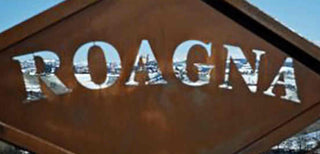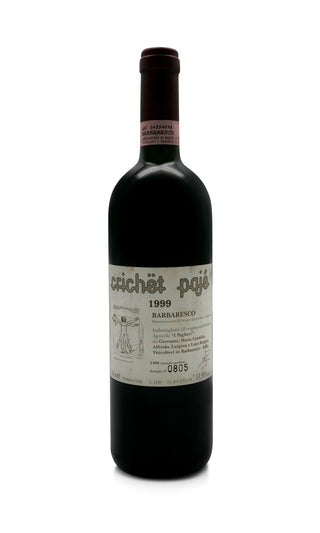
Roagna Winery
Roagna Winery
The small winery of the Roagna family is located in the Italian wine-growing region of Piedmont at the foot of the Alps. The quality of the Barolo and Barbaresco wines, handcrafted from old vines, is among the best that these areas can offer. The owners work according to well thought-out, tradition-oriented principles: consistently on grassy, biodiverse vineyards with some ancient vines, consistently without the use of fertilizers, pesticides and herbicides - and with a great deal of patience for maceration and maturation.
Size and location of the winery
The family owns 20 hectares of land, eight hectares of which are forested and the remaining twelve hectares used for vineyards. The estate consists of several historic vineyards. Four - Pajè, Asili, Montefico and Carso - are in the Barbaresco area. Nebbiolo, Dolcetto and Chardonnay vines grow here. Pira, the fifth and largest vineyard with seven hectares, is located in Castiglione Faleto in Barolo; Barbera, Chardonnay and Nebbiolo are grown. The oldest vine growing there dates from 1937.
Other historical locations in Barbaresco (Albesani, Gallina and Faset) are managed on lease or in cooperation.
Story
The Roagna family has lived in Barbaresco as winemakers for centuries. However, the owners date the actual beginning of the history of the winery to 1880: In this year Vincenzo and Rosa Roagna produced the first bottles of a Barbaresco wine, which roughly meets the requirements, which is also understood by it today.
In 1929 the family acquired the historic Montefico vineyard, in the 1950s Pajè and Carso, in 1961 Asili and in 1989 Pira. Luca Roagna has been managing the winery since 2001 in the fifth generation.
Strict cultivation principles as a success factor
In the interest of the highest purity of smell and taste, strict cultivation principles still apply today. The viticulture of the Roagna winegrowers is based on a number of demanding principles that are implemented with great effort:
Old vines: The basis for the sublime quality of the Roagna wines are vines that have been adapted to the micro-locations of the cultivated growing areas for 50 years or more. Cultivation on completely grassy soil without any artificial irrigation has established vines with deep root systems penetrating several layers of sediment, which give the wines of the different terroirs their unmistakable identities.
Mass selection: In contrast to the widely used clonal selection, the winery preserves the heterogeneity of the genetic material and thus the individual diversity of its vines through mass selection. In addition, since 2012, experiments have also been carried out with seeds from the most interesting and oldest vines in the various vineyards.
Biodiversity: Surrounded by forests and completely green, the vineyards of the Roagnas have an exemplary biodiversity. Mowing, herbicides, pesticides, fertilizers and artificial irrigation are completely avoided. The resilient, meter-deep rooted vines live in a competitive and symbiotic balance with hundreds of species of herbs, microorganisms and animals. The traditional remedies copper and sulfur are used to treat fungal diseases.
Physiologically ripening harvest: Grapes are harvested purely manually and only when the berries have reached perfect physiological ripeness. The harvest on the individual plots can thus extend over several weeks.
Pied de cuve with local yeasts: Before the actual harvest, a fermentation starter is made on site with a few baskets full of grapes, which is later added to the mash. This ensures clean fermentation by the vineyard's native yeasts, further emphasizing the character of the terroir.
Record-breaking maceration time: the wine is only separated from the skins after 60 to 100 days. Color, fine tannins and polyphenols are gently but thoroughly extracted.
Long aging in unroasted, only minimally sulphured oak barrels: Instead of barriques, Roagna wines are aged in large oak barrels. This means long maturation times: Pira and Asili need three to four years, Pajé and Montefico reach their full expression in four to five, Crichet Pajé only comes out of the cellar after up to ten years. At the end of the maturation, the wines are already completely clear - no filtration or clarification is carried out. Each cask is hand built from long seasoned woods, the staves are steam bent without roasting.
Investing is worth it
In Roagna, distinctive wines are produced, vinified according to individual sites, which fully express the character of the terroir. The impressive Vecchie Viti selections come from particularly old vines. Reserves of extraordinary vintages only come onto the market after ten to fifteen years and have enormous aging potential.
